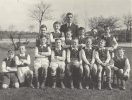Readiness Test History Primary 2 Second Term Lesson Notes Week 1
Subject: History
Class: Primary 2
Term: Second Term
Week: 1
Age: 7 – 8 years
Topic: Review of First Term History Topics and Introduction to Indigenous People of Lagos State
Sub-topic: Indigenous People and Other Pre-Colonial Settlers in Lagos State
Duration: 40 minutes
Behavioral Objectives
By the end of the lesson, pupils should be able to:
- Recall topics covered in First Term History.
- Identify the indigenous people of Lagos State.
- State the traditions and origins of the Awori, Egun, and Ijebu.
- Mention the location of the indigenous people of Lagos State.
- Recognize other pre-colonial settlers in Lagos State (Bim, Tapa, Creoles, Aramos).
Keywords
Indigenous, Awori, Egun, Ijebu, pre-colonial, settlers, Creoles, Aramos
Learning Resources and Materials
- Map of Lagos State showing indigenous communities
- Pictures of the Awori, Egun, Ijebu, and pre-colonial settlers
- Flashcards with key terms
- Storybooks or narratives on Lagos State history
Building Background/Connection to Prior Knowledge
The teacher will ask pupils questions about what they learned in the First Term, such as topics on Lagos State’s history, important events, and indigenous people.
Embedded Core Skills
- Critical thinking
- Communication
- Cultural awareness
Lesson Content
First Term Topics Review
- History as a Subject:
- Meaning and importance of history.
- Why it is important to study the past.
- Indigenous People of Lagos State:
- The Awori, Egun, and Ijebu tribes.
- Tradition and Origin of Indigenous People:
- Awori: Early settlers of Lagos State, believed to have migrated from Ile-Ife.
- Egun: Settled in Badagry and other coastal areas.
- Ijebu: Known for trade and farming, originating from Ijebu Ode.
- Location of Indigenous People in Lagos State:
- Awori: Mainland areas like Ikeja and Agege.
- Egun: Badagry and coastal regions.
- Ijebu: Eastern parts of Lagos, bordering Ogun State.
- Other Pre-Colonial Settlers:
- Bim (Edo): Migrants from the Benin Kingdom.
- Tapa (Nupe): Traders from central Nigeria.
- Creoles (Sierra Leone): Returnees of African descent.
- Aramos (Brazilian Returnees): Freed slaves from Brazil who settled in Lagos.
Lesson Presentation
Step 1: Teacher’s Activities
- Review key points from the First Term topics.
- Display a map of Lagos State and explain the locations of the indigenous people.
Step 2: Learners’ Activities
- Pupils will point out the locations of the Awori, Egun, and Ijebu on the map.
- Share what they know about the traditions of these groups.
Step 3: Introduction of New Topic
- Discuss the other pre-colonial settlers, using visuals or flashcards to explain who they were and where they came from.
Evaluation Questions (Fill in the Blanks)
- The Awori are believed to have migrated from ________.
- a) Benin
- b) Ile-Ife
- c) Badagry
- d) Sierra Leone
- The Egun people are mainly found in ________.
- a) Ikeja
- b) Ijebu Ode
- c) Badagry
- d) Agege
- The Ijebu people are known for ________.
- a) Trade and farming
- b) Fishing
- c) Blacksmithing
- d) Weaving
- ________ were freed slaves who returned to Lagos from Brazil.
- a) Bim
- b) Aramos
- c) Creoles
- d) Tapa
- The Tapa people are originally from ________.
- a) Ile-Ife
- b) Central Nigeria
- c) Brazil
- d) Sierra Leone
- The Bim settlers came from ________.
- a) Benin Kingdom
- b) Ijebu Ode
- c) Sierra Leone
- d) Badagry
Class Activity Discussion (FAQs)
- Who are the Awori people?
The Awori are one of the first groups to settle in Lagos State, migrating from Ile-Ife. - Where are the Egun located in Lagos State?
The Egun are primarily located in Badagry. - What is unique about the Ijebu people?
They are known for their trading and farming skills. - Who were the Aramos?
The Aramos were freed slaves who returned from Brazil. - What is the significance of the Creoles?
They brought new ideas and culture from Sierra Leone to Lagos.
Conclusion
The teacher will summarize the lesson by emphasizing the indigenous groups and pre-colonial settlers in Lagos, their origins, and contributions. Pupils will be encouraged to share what they learned.
